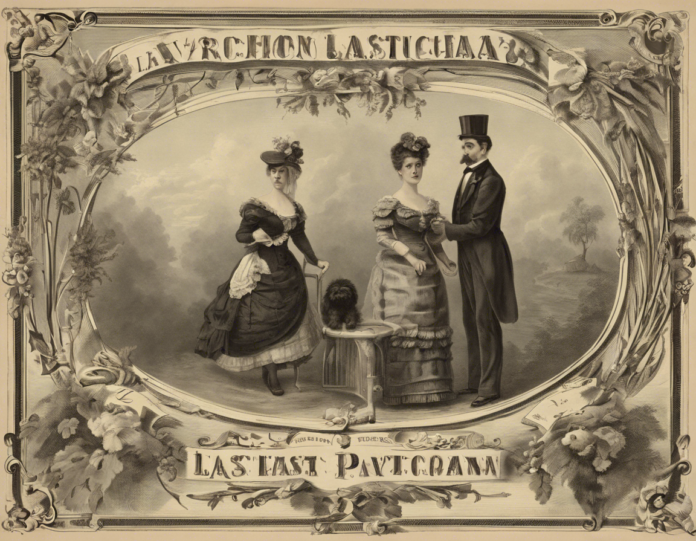The Victorian era, ranging from 1837 to 1901, was a time of significant social, economic, and cultural change in the United Kingdom. During this time, there was a strong emphasis on tradition, etiquette, and class distinctions. One important aspect of Victorian society was the use of last names to signify social status, heritage, and lineage. In this article, we will delve into the world of Victorian era last names, exploring their origins, significance, and common trends.
Origins of Victorian Era Last Names
Last names, also known as surnames, have been used for centuries to distinguish individuals within a community. In the Victorian era, last names were often derived from a person’s occupation, location, father’s first name, or physical characteristics. Common prefixes such as “Mc” or “Mac” in Scottish names denoted “son of,” while “Fitz” in English names indicated “son of” in Norman tradition.
Occupational Last Names: Many Victorian last names were based on the individual’s trade or profession. For example, names like Smith, Taylor, and Cooper were common occupational surnames derived from blacksmiths, tailors, and barrel makers, respectively.
Location-Based Last Names: Some Victorian last names indicated a person’s locality or place of origin. For instance, names like York or London denoted a connection to those specific cities or regions.
Patronymic Last Names: Patronymic surnames were prevalent in the Victorian era, with names like Johnson (son of John) or Richardson (son of Richard) reflecting the father’s first name.
Descriptive Last Names: Descriptive last names were based on a person’s physical characteristics or personal traits. For example, names like Black, Short, or White were derived from the individual’s appearance.
Significance of Victorian Era Last Names
Last names played a crucial role in Victorian society, serving as a means of identification, social categorization, and lineage preservation. Social Status: In the hierarchical structure of Victorian society, one’s last name often indicated their social standing and class. Noble families typically had prestigious or ancestral last names, while commoners might bear simpler or more common surnames.
Family Heritage: Last names were a way to preserve and pass down family heritage from one generation to the next. Victorian families took pride in their lineage and ancestral connections, reflected in their surnames.
Formal Address: Addressing individuals by their last names was a common form of respect and etiquette in Victorian times. Using the appropriate title (Mr., Mrs., Miss) along with the last name was deemed proper and polite in formal settings.
Legal Purposes: Last names were essential for legal and administrative purposes, such as property ownership, inheritance, and official documentation. A consistent and recognized last name was crucial for establishing legal identity and lineage.
Common Trends in Victorian Era Last Names
1. Anglicization: During the Victorian era, there was a trend towards anglicizing or simplifying foreign-sounding last names to assimilate into English society. This often involved changing spellings or pronunciations to align with English conventions.
2. Double Barrelled Names: Some Victorian families adopted double-barrelled last names, combining two surnames through marriage or inheritance. This practice often preserved both family lines and was more common among the upper class.
3. Surnames as Middle Names: Another trend was using surnames as middle names, especially in upper-class families. This practice served to honor maternal or ancestral surnames while maintaining the primary family name.
4. Topographical Surnames: Topographical surnames, derived from geographic features or landmarks, were prevalent in Victorian England. Names like Hill, Brook, or Wood reflected the individual’s connection to the land.
5. Decline of Patronymic Names: While patronymic names were common in earlier centuries, they began to decline in popularity during the Victorian era. The focus shifted towards occupational, locational, or descriptive surnames instead.
FAQs about Victorian Era Last Names
Q: Were women’s last names different in the Victorian era?
A: Traditionally, women in the Victorian era took their husband’s last name upon marriage. However, some women retained their maiden names, especially in artistic or literary circles.
Q: How did immigrants’ last names adapt in Victorian England?
A: Immigrants often anglicized their last names to fit into English society, either voluntarily or due to pressure to assimilate. This led to changes in spellings or pronunciations.
Q: Were there any restrictions on changing last names in the Victorian era?
A: While there were no strict legal restrictions on changing last names, it was not a common practice unless for purposes like inheritance or royal decrees.
Q: Did children always inherit their father’s last name in the Victorian era?
A: It was the customary practice for children to inherit their father’s last name in the Victorian era, reflecting the patriarchal nature of society at that time.
Q: How did social status affect one’s last name in Victorian England?
A: Social status often influenced the choice of last names in Victorian England, with nobility and upper-class families having more prestigious or ancestral surnames compared to commoners.
In conclusion, Victorian era last names offer a fascinating glimpse into the social dynamics, traditions, and customs of the time. From occupational and locational names to patronymic and descriptive surnames, each last name carries a rich history and story within it. Understanding the origins and significance of Victorian last names provides valuable insight into the complexities of society during this transformative period in history.
















